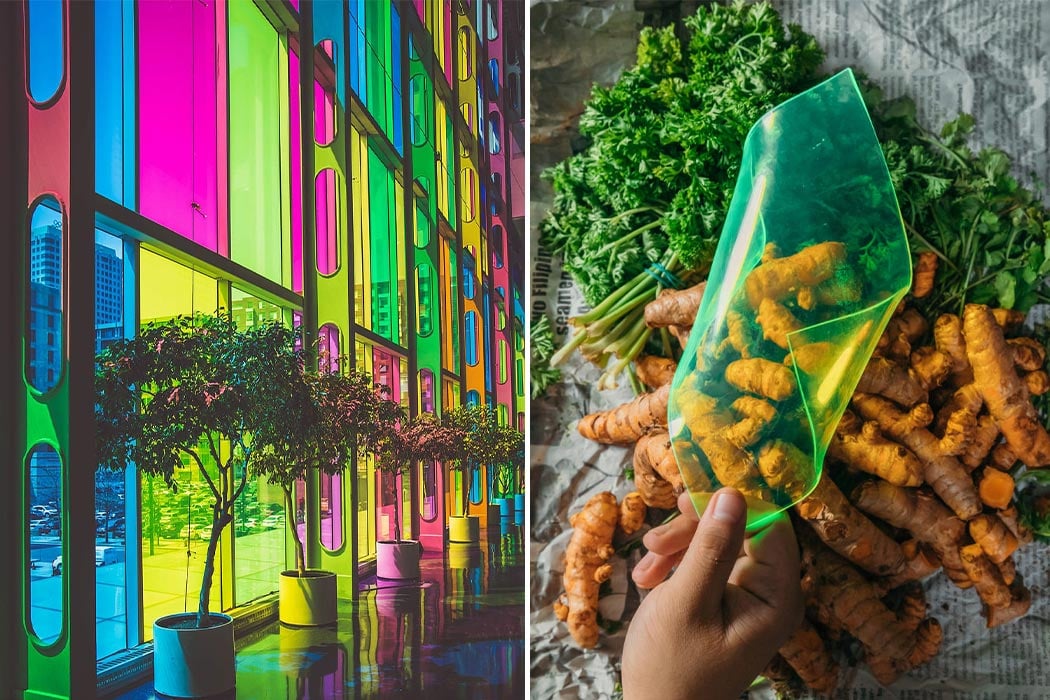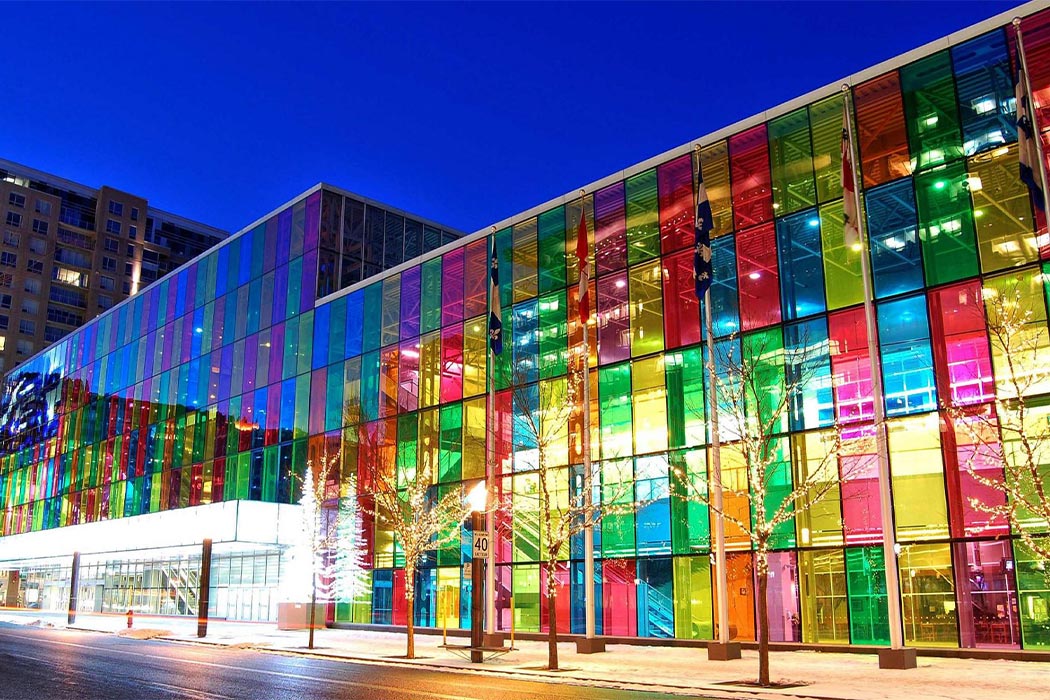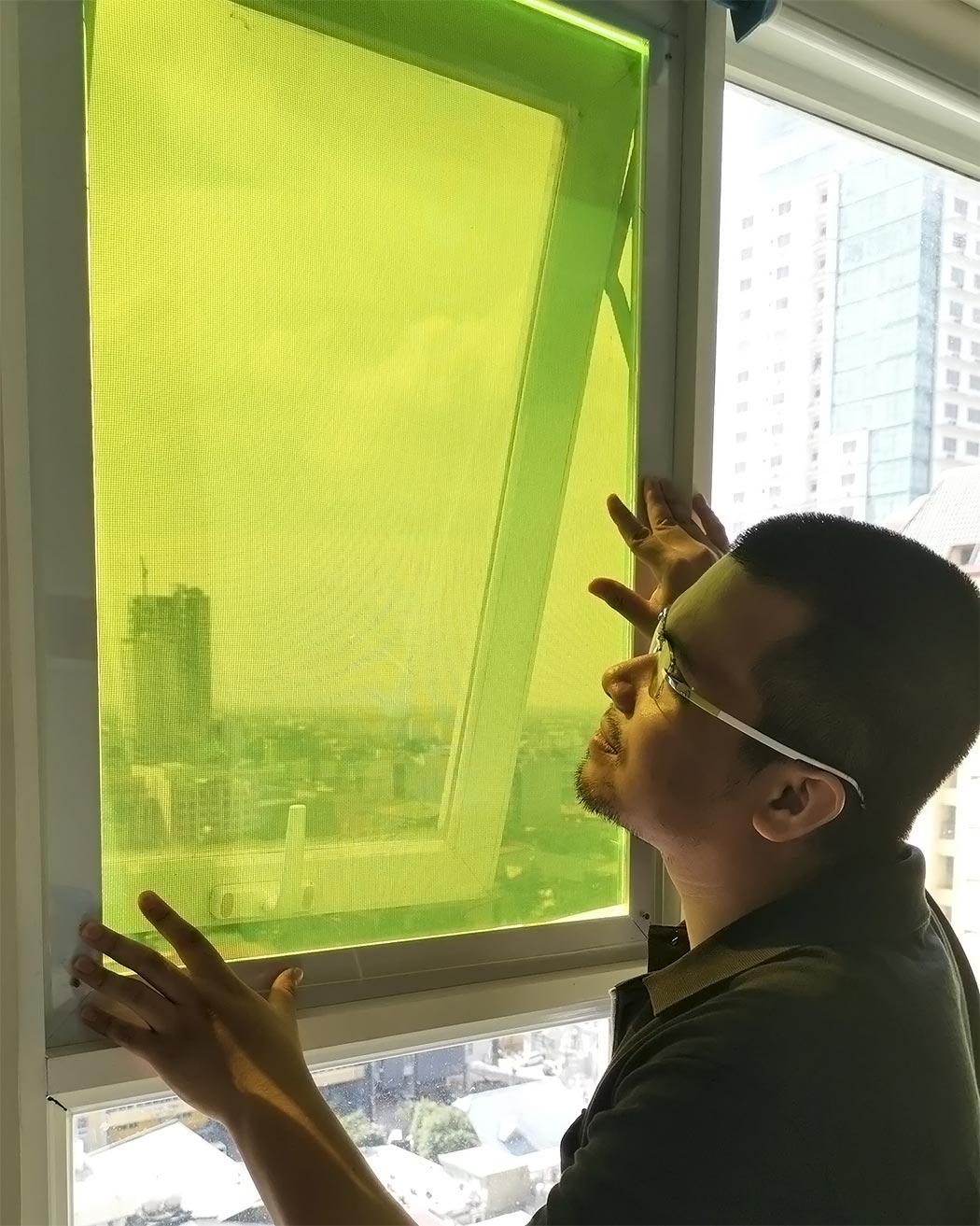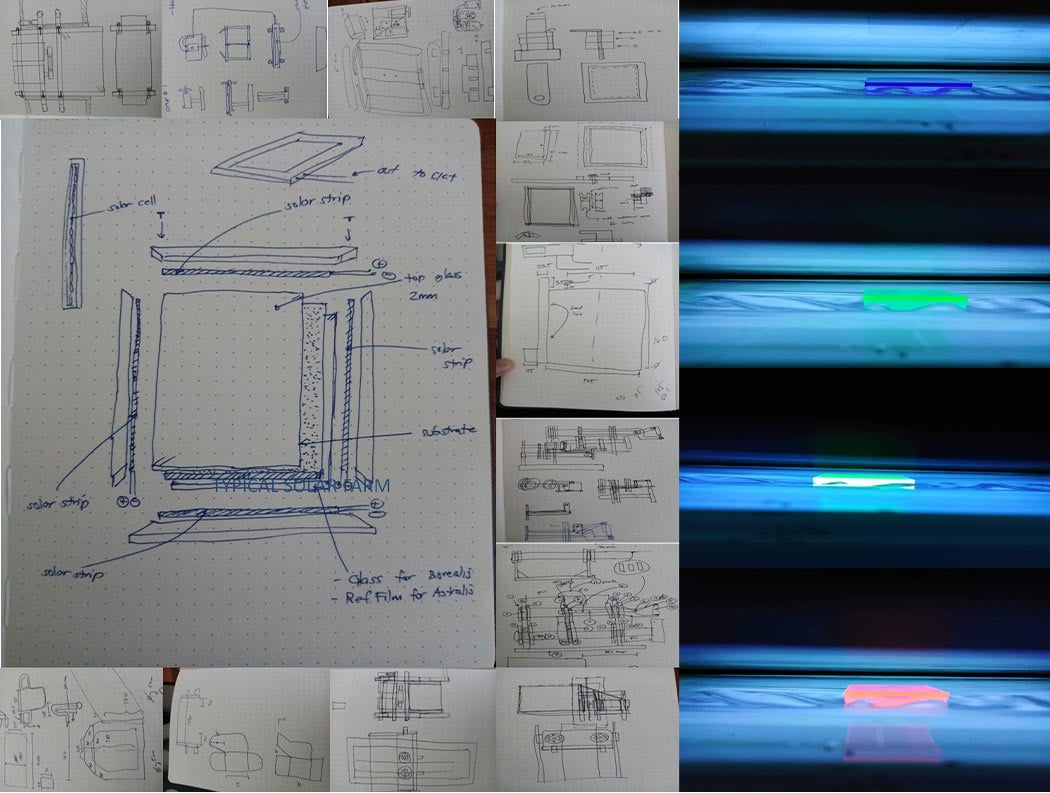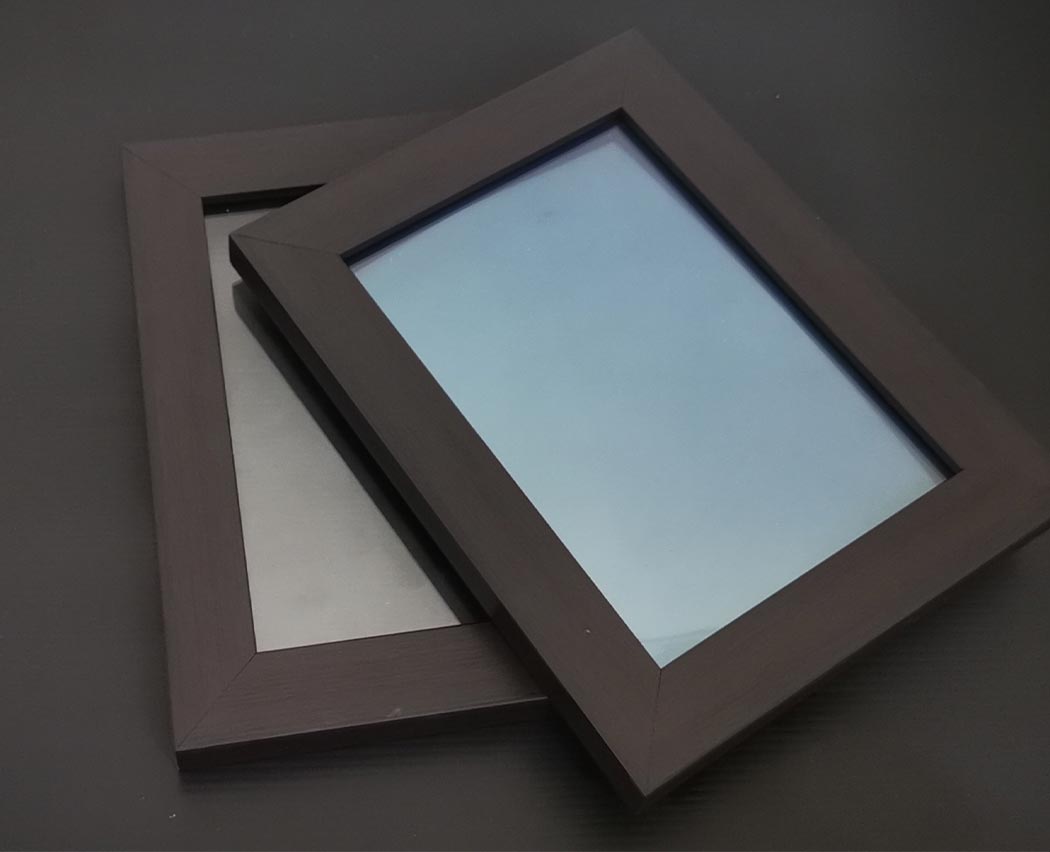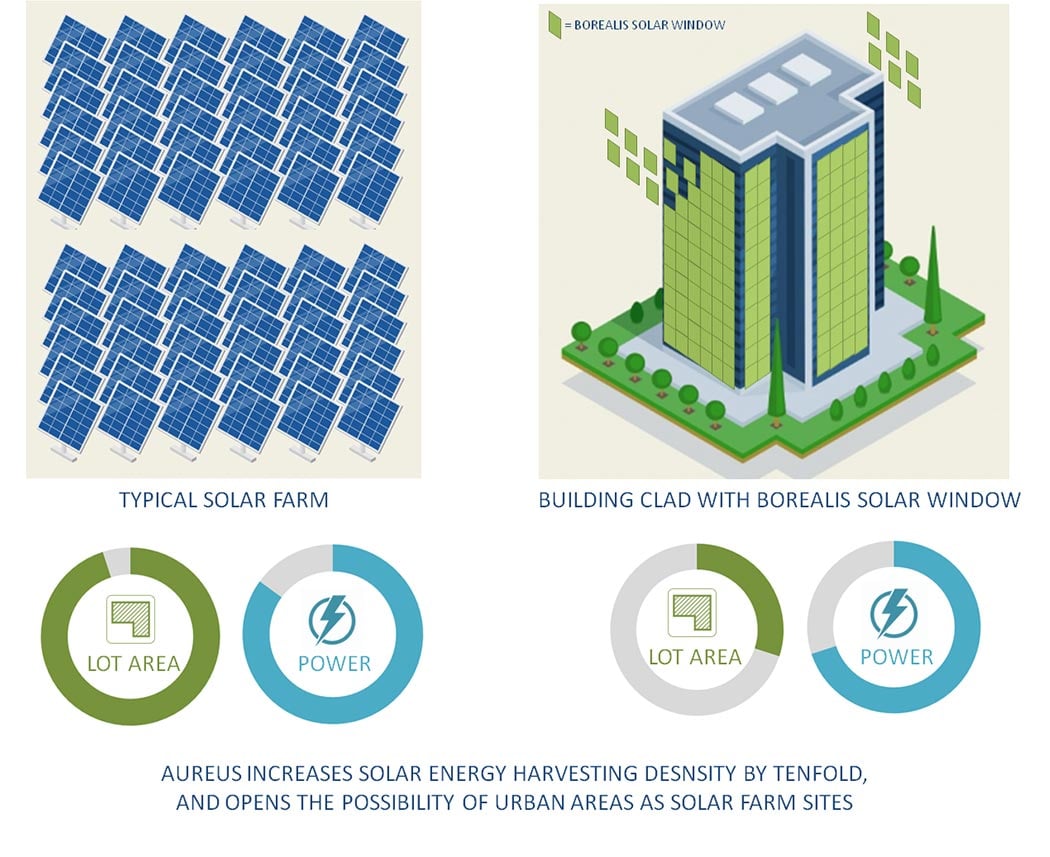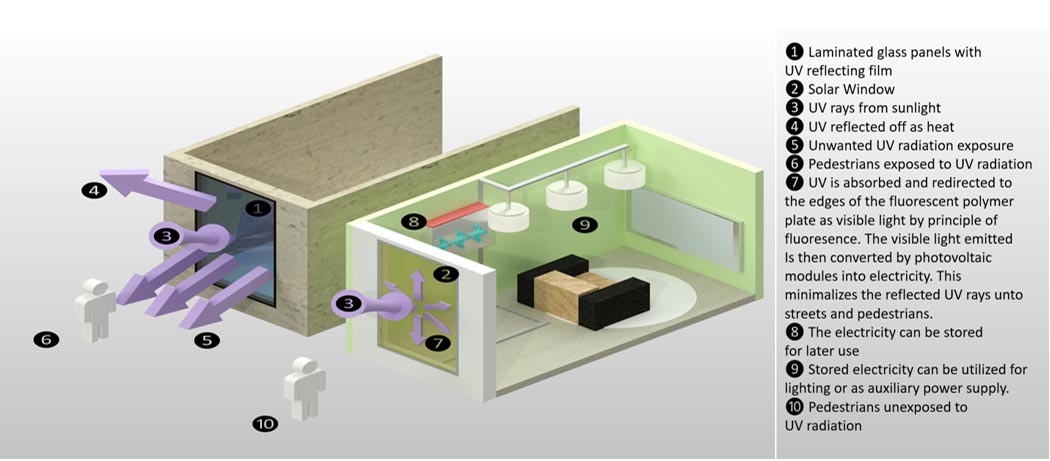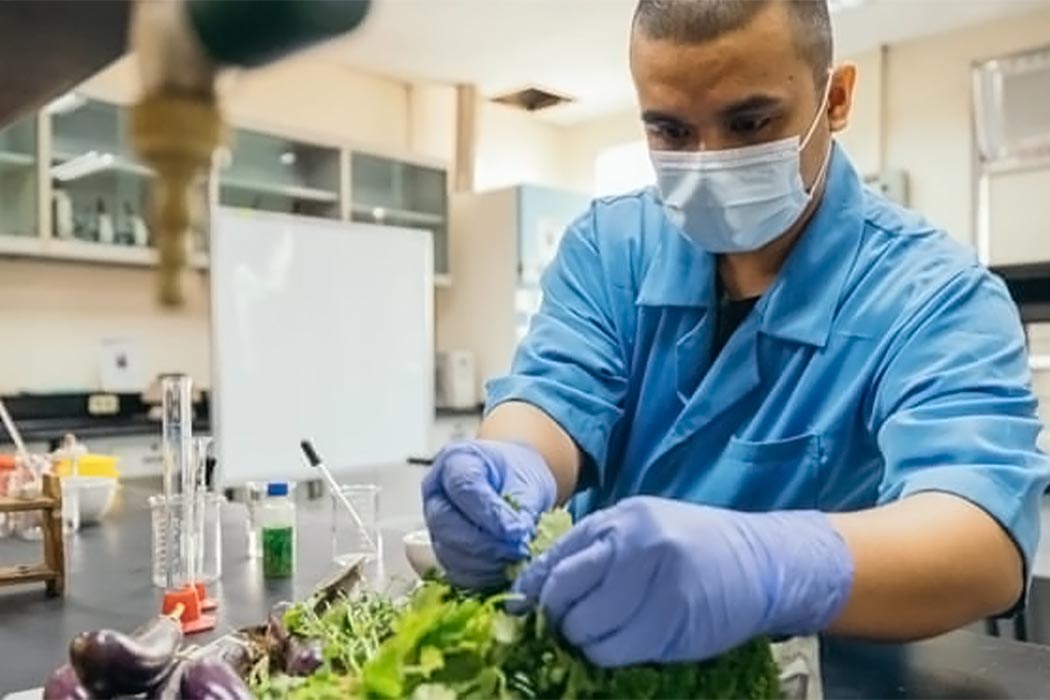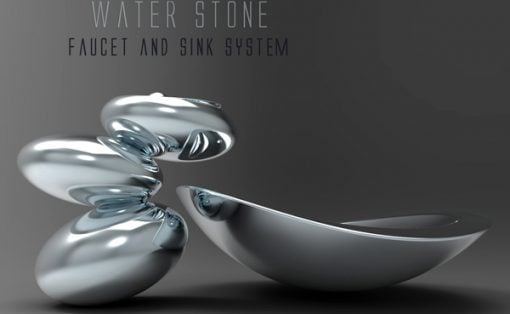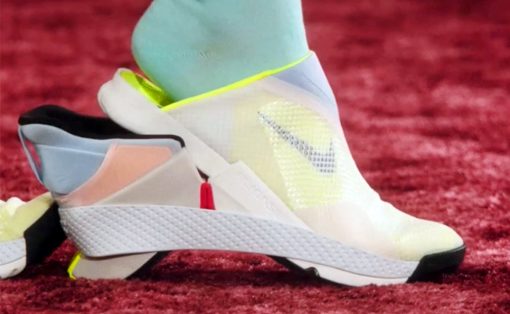Sustainability is the next big movement when it comes to design, it is something every industry will have to apply and one of the most interesting parts of it is material exploration – what substitutes can we use or tweaks can we make to optimize our resources for the betterment of the climate? Fossil fuels continue to account for over 81% of global energy production according to the International Energy Agency and if we continue to burn fossil fuels at the current rate, global supplies of gas and oil will deplete by 2060.
To make sure we are prepared for change, we need to focus on accessible and effective renewable alternatives (like Quantum Dots). This year’s James Dyson Award winner in the sustainability category attempts to answer their question with an innovative solar energy-harvesting window made of recycled materials. The AuREUS system uses technology created from upcycled crop waste that helps walls/windows absorb stray UV light from sunlight and convert it to clean renewable electricity – absolute genius!
Designed by Carvey Ehren Maigue of Mapua University, these panels can be crafted into windows or walls which will harvest solar energy and convert it into electricity. Three things that made me instantly fall in love with this design are 1) clean renewable energy 2) using crop waste and 3) lower electricity bills. AuRUES was inspired by the phenomenon of the aurora lights which is a whimsical natural process that occurs when luminescent particles in the upper atmosphere absorb energy from UV and gamma radiation and emit it as visible light. The panels mimic this process by embedding similar luminescent particles in resin so that when the sunlight hits the panel it absorbs the UV and produces visible light. The light is then directed towards the edges of the panel where regular photovoltaic cells collect the energy to turn it into electricity. The colors of the luminescent particles come from dyes that were made from waste crops which makes this a closed-loop system.
The current renewable energy solutions can only generate electricity in the right environmental conditions. For example, solar panels can only capture and convert visible light into renewable energy and must be facing the sun to do so. Even solar farms need to be built horizontally which takes up space that could actually be used for cultivation or other resources. By using AuREUS, it eliminates the need to have certain conditions to harness solar energy which makes it more efficient and accommodating to various spaces.
“As a farmer, I see great potential in this technology to generate clean renewable energy. AuREUS System Technology conserves space using pre-existing structures, utilizes current resources and waste streams, and supports local agricultural communities,” says James Dyson. By harvesting UV radiation AuREUS opens a gateway to increase the potential of solar energy as conventional solar cells miss that part of the spectrum.
Apart from lowering costs, mitigating climate change, and supporting local agricultural communities, these panels will also reduce people’s exposure to radiation that can cause serious diseases and help in reducing the urban carbon footprint with sustainable architecture. “I want to create a better form of renewable energy that uses the world’s natural resources, is close to people’s lives, forging achievable paths and rallying towards a sustainable and regenerative future,” says Maigue. His invention is both future-looking and problem-solving for the present.
Designer: Carvey Ehren Maigue
